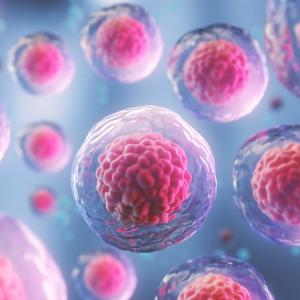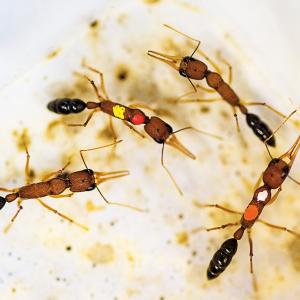Finding Caps Three Years of Research Led by Biochemists at NYU Langone Medical Center
Chemical modifications to DNA’s packaging — known as epigenetic changes — can activate or repress genes involved in autism spectrum disorders (ASDs) and early brain development, according to a new study to be published in the journal Nature on Dec. 18.
Biochemists from NYU Langone Medical Center found that these epigenetic changes in mice and laboratory experiments remove the blocking mechanism of a protein complex long known for gene suppression, and transitions the complex to a gene activating role instead.
Researchers say their findings represent the first link between this role reversal and the presence of an important protein whose encoding gene — autism susceptibility candidate gene 2 or AUTS2 — has long been tied to ASDs. They also say their study offers a novel theory about how ASDs develop through widespread unraveling of traditional brain pathways.
Specifically, researchers showed that AUTS2 converts polycomb repressive complex 1 (PRC1) — one of a group of proteins involved in transcriptional regulation during development — to a gene-activating role, during which it prevents a chemical modification change to histone H2A, a main DNA-packaging protein in all cells with a nucleus.
According to senior study investigator Danny Reinberg, PhD, a professor at NYU School of Medicine and a Howard Hughes Medical Institute investigator, his team’s latest findings “offer strong supporting evidence that if ASDs can be tied to widespread disruption of gene networks from multiple genetic lesions, then finding potential therapies could rest on research into repairing these gene network interruptions.”
Among the study’s other key findings, researchers found that disrupting the function of AUTS2 in mice led to behaviors that were comparable to the neurologically delayed autistic behaviors observed in people. Researchers have already estimated that nearly half of all people with AUTS2 mutations have been diagnosed with some form of the syndrome.
Additional experiments found that AUTS2 proteins were dominant in the cortex region of the mouse brain — the part of the brain involving memory, attention, and learning — and were more present in the first few weeks of life than after mice reach adulthood.
To further affirm their findings on the role of AUTS2 in controlling the syndrome, researchers genetically interrupted AUTS2 expression in mice and measured behavioral and motor-reflex effects. Mice with disrupted AUTS2 were slow to react, taking twice as long to right themselves after being placed on their backs, and making fewer than half as many calls after their mothers were taken away, than mice whose AUTS2 production was not impaired. Most AUTS2-deficient mice were also significantly shorter and had lower birth weights than mice producing AUTS2.
Reinberg, whose earlier research in 2012 helped differentiate among various polycomb repressive complexes, also says the new findings point to AUTS2 as a “master regulator” controlling a key transcriptional program during early brain development.
Researchers began the latest study after unexpectedly recording some AUTS2 protein interaction with PRC1 while trying to better define all the PRC1 complexes.
Reinberg’s team plans further study of AUTS2 and its activities in other parts of the brain to uncover other possible links to ASDs or other neurological conditions, such as attention deficit hyperactivity disorder (ADHD) and schizophrenia.
Funding support for the study was provided by National Institutes of Health grants R01 GM64844. 1DP2 MH100012-01, 5T32 CA160002-03, IF32 GM105275-01A1, and F32 AA022842. Additional funding support came from the Howard Hughes Medical Institute, the Simons Foundation Autism Research Initiative, and the Brain and Behavioral Research Fund Young Investigator Award.
Besides Reinberg, other NYU Langone researchers involved in these experiments were lead study investigators Zhonghua Gao, PhD; Pedro Lee, PhD; and James Stafford, PhD. Additional research support was provided by Anne Schaefer, MD, PhD, and Melanie von Schimmelmann, PhD, at Mount Sinai School of Medicine, also in New York.
Media Inquiries
David March
Phone: 212-404-3528
david.march@nyumc.org

